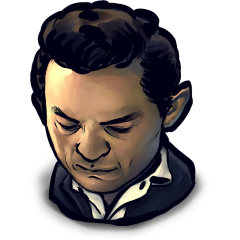Accounting Final Exam Complete Solution
QUESTION 1
Which of the following is not an equity security?
a. Common stock
b. Warrants
c. Call options
d. Redeemable preferred stock with a mandatory redemption period
QUESTION 2
On January 1, 2005, N Inc. purchased 10-year bonds issued by B Company. The bonds have a face value of $500,000 and pay interest annually at 8 percent on each December 31. N purchased the bonds for $550,000. N’s accounting year ends on December 31. N’s management has chosen to treat the bonds purchased as an available-for-sale security. There are no other securities in the available-for-sale portfolio. Assume that on December 31, 2005, the fair market value of the bonds was $510,000. The company uses the straight-line method of amortization. What is the amount of interest income to be reported on the 2005 income statement?
a. $35,000
b. $40,000
c. $44,000
d. $45,000
QUESTION 3
At December 31, 2005 and 2006, C Corp. had outstanding 4,000 shares of $100 par value, 6 percent cumulative preferred stock and 20,000 shares of $10 par value common stock. At December 31, 2005, dividends in arrears on the preferred stock were $12,000. Cash dividends declared in 2006 totaled $44,000. Of the $44,000, what amounts were payable on each class of stock?
|
Preferred Stock |
Common Stock |
|
a. $44,000 |
$0 |
|
b. $36,000 |
$8,000 |
|
c. $32,000 |
$12,000 |
|
d. $24,000 |
$20,000 |
QUESTION 4
A liability for a cash dividend exists at the
a. end of each year
b. date of declaration
c. date of record
d. date of payment
QUESTION 5
Coe Corp. issued 20,000 shares of $5 par common stock at $10 per share. On December 31, 2005, Coe's retained earnings were $300,000. In March 2006, Coe reacquired 5,000 shares of its common stock at $20 per share. In June 2006, Coe sold 1,000 of these shares to its corporate officers for $25 per share. Coe uses the cost method to account for its treasury stock. Net income for the year ended December 31, 2006, was $60,000. At December 31, 2006, what amount should Coe report as retained earnings?
a. $360,000
b. $365,000
c. $375,000
d. $380,000
QUESTION 6
William Corp. issued 10,000 shares of its $1 par value common stock for a building. The building was listed for sale at $500,000. William’s common stock is currently selling for $45 per share. William Corp. should record the building at
a. $10,000
b. $440,000
c. $450,000
d. $500,000
QUESTION 7
Assume that S Company makes sales of $400,000 during 2004 and reports the amount as sales revenue on its income statement. Also assume that the company wishes to delay the reporting of a portion of that amount for tax purposes and uses the installment sales method for tax purposes. Assume that $100,000 of collections occurred during 2004, $150,000 occurred in 2005, and the remainder will occur in 2006. Assuming a tax rate of 40 percent, what is the amount of the entry into the Deferred Tax account at the end of the year 2004?
a. $40,000
b. $60,000
c. $120,000
d. $160,000
QUESTION 8
The Company purchases an asset on January 1, 2005, for $200,000. The straight-line method of depreciation is used for book purposes, resulting in depreciation of $50,000 per year. An accelerated method is used for tax purposes, resulting in depreciation of $80,000, $60,000, $40,000, and $20,000 for the years 2005, 2006, 2007, and 2008, respectively. Assume that the tax rate is 40 percent for all years and that depreciation is the only temporary difference between book and tax purposes. The 2005 journal entry would include a
a. debit to Deferred Tax Liability of $12,000
b. debit to Deferred Tax Liability of $4,000
c. credit to Deferred Tax Asset of $4,000
d. credit to Deferred Tax Liability of $12,000
QUESTION 9
Which of the following has no effect on comprehensive income?
a. Unrealized gains and losses on held-to-maturity investments
b. Unrealized gains and losses on available-for-sale investments
c. Unrealized gains and losses on trading securities
d. Realized gains and losses on available-for-sale securities that were held in previous periods
QUESTION 10
Assume that Grandzol Company believes that $120,000 of a $600,000 deduction will not be utilized in future periods and that the tax rate is 40 percent for all periods. What is the amount of the valuation allowance?
a. $48,000
b. $120,000
c. $192,000
d. $240,000
QUESTION 11
Information regarding Silly Co.’s portfolio of available-for-sale securities is as follows:
a. Aggregate cost as of 12/31/05 $170,000
b. Unrealized gains as of 12/31/05 4,000
c. Unrealized losses as of 12/31/05 26,000
d. Net realized gains during 2005 30,000
At December 31, 2004, Silly reported an unrealized holding loss from available-for-sale securities of $1,500 on the statement of stockholders’ equity. Assuming the application of SFAS No. 115, “Accounting for Certain Investments in Debt and Equity Securities,” what amount should Silly report on its December 31, 2005, balance sheet as an unrealized holding loss?
a. $26,000
b. $22,000
c. $20,500
d. $0
QUESTION 12
Treasury stock is a(n)
a. asset account
b. contra-asset account
c. equity account
d. contra-equity account
QUESTION 13
On March 1, 2004, Leo Corp. was formed by issuing 100,000 shares of $1 par value common stock at $5 per share and 20,000 shares of $100 par value preferred stock at $101 per share. If Leo earned $35,000 in its first year of operations, total stockholders’ equity at year end would be
a. $335,000
b. $735,000
c. $2,135,000.
d. $2,555,000
QUESTION 14
Interest received from available-for-sale debt securities should be reported as
a. an unrealized holding gain—income
b. an unrealized holding gain—equity
c. other revenue on the income statement
d. a reclassification adjustment on the statement of comprehensive income
QUESTION 15
During 2005, Bob Co. issued 5,000 shares of $100 par convertible preferred stock for $110 per share. One share of preferred stock can be converted into three shares of Bob's $25 par common stock at the option of the preferred shareholder. On December 31, 2006, when the market value of the common stock was $40 per share, all of the preferred stock was converted. What amount should Bob credit to Common Stock and to Additional Paid-in Capital as a result of the conversion?
|
Common Stock |
Additional Paid-in-Capital |
|
a. $375,000 |
$175,000 |
|
b. $375,000 |
$225,000 |
|
c. $500,000 |
$50,000 |
|
d. $600,000 |
$0 |
QUESTION 16
If a company reissued at $20 per share 100 shares of treasury stock that it had previously acquired for $28 per share and there wasn’t any Paid-in Capital from Treasury Stock, it would debit
a. Loss on Sale of Treasury Stock for $800
b. Paid-in Capital from Common Stock for $800
c. Retained Earnings for $800
d. Treasury Stock for $800
QUESTION 17
B Corp. issued 200,000 shares of common stock when it began operations in 2004 and issued an additional 100,000 shares in 2005. B also issued preferred stock convertible into 100,000 shares of common stock. In 2006, B purchased 75,000 shares of its common stock and held it in the treasury. At December 31, 2006, how many shares of B's common stock were outstanding?
a. 400,000
b. 325,000
c. 300,000
d. 225,000
QUESTION 18
Assume that Bad Company makes sales of $200,000 during 2004 and reports the amount as sales revenue on its income statement. Also assume that the company wishes to delay the reporting of a portion of that amount for tax purposes and uses the installment sales method for tax purposes. Assume that $60,000 of collections occurred during 2004 and the remainder will occur in 2005. What is the amount of the temporary difference at the end of the year 2004?
a. $200,000
b. $140,000
c. $60,000
d. $0
QUESTION 19
Rent income received in advance that is included for tax purposes when received, but recorded for book purposes when earned results in
a. expense items and deductions being taken for tax purposes before book purposes
b. expense items and deductions being recorded for book purposes before tax purposes
c. purposes income being included for tax purposes before book
d. income being recorded for book purposes before tax purposes.
QUESTION 20
Debt securities that are classified as available-for-sale securities are reported on the balance sheet at
a. fair value
b. historical cost
c. amortized cost
d. lower of amortized cost or fair value
QUESTION 21
Dividends are a(n)
a. expense
b. distribution to owners
c. asset
d. increase in equity
QUESTION 22
Which of the following does not use the Adjustment and Unrealized Holding Gain (Loss) accounts?
a. Held-to-maturity securities
b. Trading securities
c. Available-for-sale securities
d. Both held-to-maturity and trading securities
QUESTION 23
Other comprehensive income includes changes in the fair value of
a. held-to-maturity securities
b. trading securities
c. available-for-sale securities
d. investments accounted for under the equity method
Accounting Final Exam Complete Solution
b. Warrants
2
b. $40,000
Interest on bonds received on available for sale portfolio is recognized for interest received not on the basis of market value of investment. Therefore it will be $40,000.
3
b. $36,000
$8,000
Cash dividend 44,000 – cumulativ...





Online Users
-
 Tutormaster
Today
Tutormaster
Today




A+ - Thank you!
Thanks for the positive feedback!